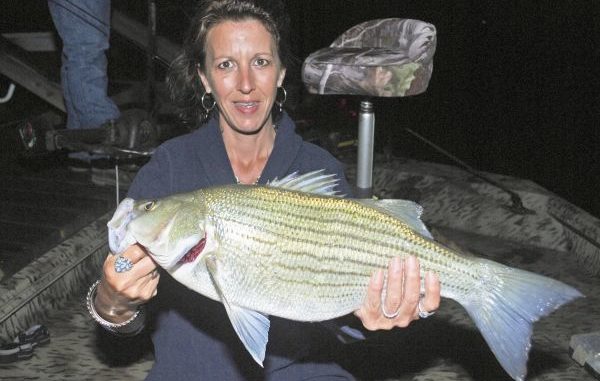
Men, it seems — more specifically fishermen — like to mess with Mother Nature. North America is blessed with hundreds of suitable species for fishermen to catch, yet the pursuit of superfish for anglers to chase has led fisheries biologists to cross breed many naturally occurring species.
Brown, brook, lake, rainbow and cutthroat, trout have been crossed to produce tiger trout, splake and cutbows. Muskellunge and northern pike have been hybridized to make tiger muskellunge. Largemouth bass and smallmouth bass have been mated to create the meanmouth bass.
As their name implies, hybrid striped bass are not a naturally occurring species but one of those hybrids between separate species in the temperate bass family, Moronidae. The family is small, consisting of only white perch, yellow bass, white bass and striped bass.
The white perch of which we are speaking are not the crappie that we locally call white perch in Louisiana, but a small (under 1 pound), silvery bass-like fish living in brackish or tidally influenced fresh waters from South Carolina to Canada. They are not found in Louisiana.
But the other three species, all with prominent black stripes are. Smallest and not involved in the hybridization program is the yellow bass. It is easy to separate from its two larger relatives by a strong break in the black stripes on each side of the fish. Like its white bass cousin, the yellow bass is found statewide in fresh waters.
The white bass is a larger fish. The world record for the species, — 6.8 pounds — was caught right here in Louisiana by Corey Crochet in 2000.
The striped bass (world record 81 pounds 14 ounces) has historically had a much more restricted natural range in Louisiana, verified only from the rivers east of the Mississippi River that drain into Lakes Pontchartrain and Borgne.
Hybrid striped bass are a cross of white and striped bass. It was first produced in South Carolina in 1965, using eggs from striped bass and sperm from white bass.
The term “palmetto bass” was hung on these fish.
In the 1970s, hybrids were produced from the eggs of white bass and the sperm of striped bass. These were called “Cherokee bass” when produced in Tennessee and “sunshine bass” when produced in Florida.
Other names used for these hybrids include “whiterock bass” and “wiper,” the latter still a commonly used name in Texas and the Midwest.
In the Southeast, which includes Louisiana, they are usually called “hybrids” or “hybrid striped bass.”
Whatever they are called, hybrid striped bass do have some advantages over their parent species. They grow faster and can tolerate high water temperatures and low oxygen — both common conditions in the Deep South — better than either parent. They grow larger than white bass, reaching weights of over 20 pounds, although the Louisiana record is 16 pounds, 4 ounces. Their life span is 5 to 6 years, similar to that of the white bass, but shorter than the 30 to 40 years of striped bass.
Because of sharply differing bag limits (50 each for white and yellow bass; five fish with no more than two fish over 30 inches for stripers and hybrids), it is important that fishermen be able to identify species.
Striped bass are relatively easy to ID, with strong, unbroken black stripes extending the length of the body. In cross-section their body is distinctly round in shape.
White bass and hybrids look most alike. The stripes on the side of white bass are regular, without any interruptions, but only one stripe — the center one — extends all the way to the base of the tail.
In hybrids, several of the black stripes will extend to the base of the tail and some of the stripes, especially the lower ones, will be interrupted or wavy rather than straight.
White bass bodies in cross-section are distinctly flattened from side-to-side. Hybrid’s bodies are cross-sectionally shaped between white bass and striped bass, although this feature has limited usefulness unless a white bass is present for comparison.
A key feature that can be used to separate hybrid stripers from white bass are the rough tooth patches found on the back of their tongues. In white bass, the teeth are in one patch, while the teeth in hybrid stripers and striped bass, are arranged in two distinct patches.